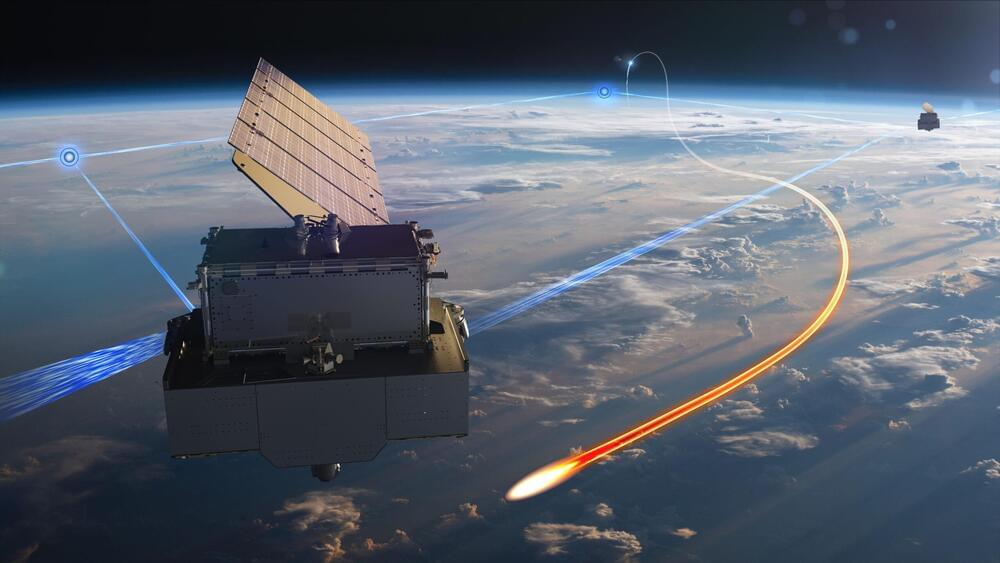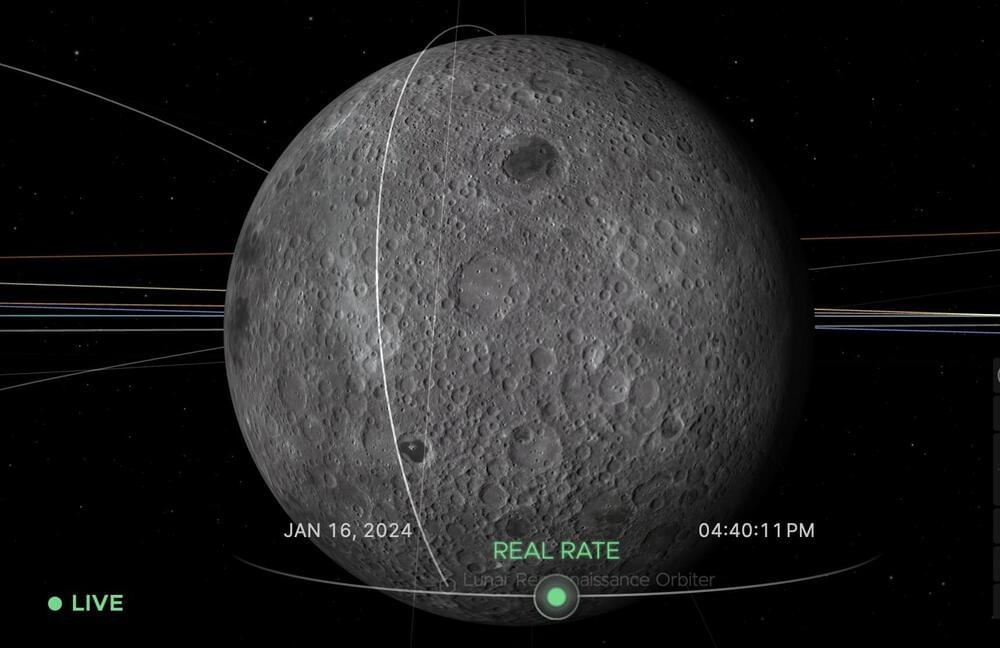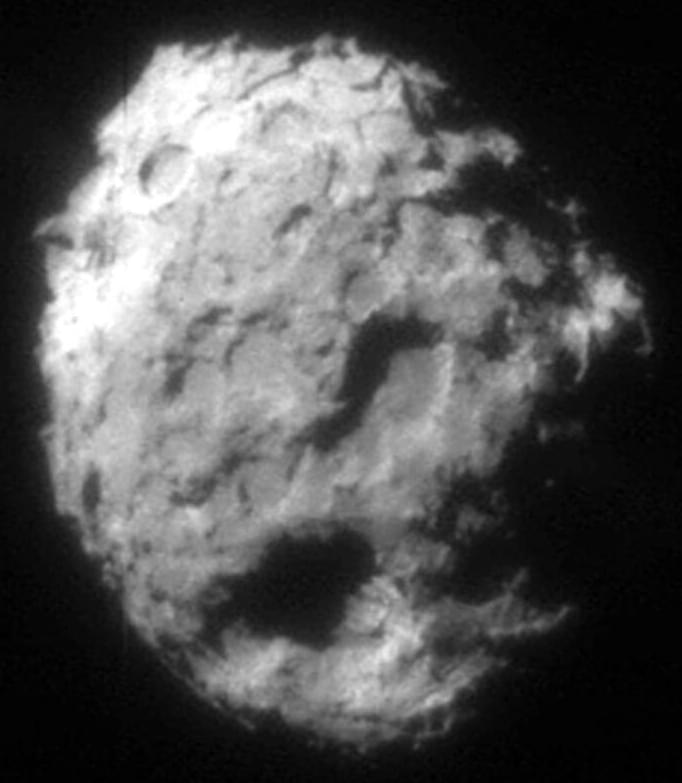It is a key part of local culture, and looks like it was colored with a crayon.



WASHINGTON — The Space Development Agency announced Jan. 16 it selected L3Harris, Lockheed Martin and Sierra Space to build and operate 54 satellites equipped with infrared sensors capable of tracking hypersonic missiles in all phases of flight.
The satellites will be part of SDA’s Tranche 2 Tracking Layer, a network of satellites in low orbit 1,000 kilometers above Earth.
The three agreements are worth about $2.5 billion. Each company will produce and operate 18 satellites — the contract awarded to L3Harris is worth $919 million, Lockheed Martin’s is $890 million and Sierra Space’s is $740 million. The contracts include incentives for on-time delivery.

WASHINGTON — The U.S. needs to flex its space muscles in the face of China’s lunar ambitions, argues a new report from the Mitchell Institute for Aerospace Studies released Jan. 17.
More specifically, the U.S. military should step up collaboration with NASA and support the development of infrastructure for scientific and economic activities in cislunar space, “as well as the means to secure those activities from potential threats such as territorial claims and irresponsible or hostile behavior,” writes Charles Galbreath, senior fellow for space studies at the Mitchell Institute.
Cislunar space — the region of space between Earth and the orbit of the moon — is becoming increasingly important strategically and economically due to potential lunar exploration, space mining and other commercial efforts poised to ramp up in the coming years.
Japan’s SLIM moon lander has entered a lower, near-circular lunar orbit ahead of its Jan. 19 landing attempt.

From what I could see the increase was pretty consistent—so not a dangerous spike—but lower-end laptops mainly used for browsing could start having heat problems. At best it’s inconvenient and annoying.
This has led to troubleshooting paranoia, as sudden and unexplained performance dips can be a sign of hardware problems. User JotaroKujoxXx says they were “wondering why my laptop ran like a fucking jet for the last few days”, while another commenter replies: “Yeah I’ve been deleting shit randomly thinking it was my storage space problem.”
The slow-down also appears to be impacting users who are subscribed to YouTube Premium while using AdBlocker for other websites, which is a problem—seeing as a subscription is a way to avoid ads without violating ToS, causing some users to feel hard done by. Our Guides Writer Sarah James tested the extension with Premium, and noted an increase of about 15–18%.

“The Stardust samples, microscopic grains from a body less than two miles wide, contain a record of the deep past covering billions of miles,” said Dr. Ryan Ogliore. “After 18 years of interrogating this comet, we have a much better view of the solar system’s dynamic formative years.”
What can samples collected from a comet almost 20 years ago tell us about the history of comets and our solar system? This is what a recent study published in Geochemistry hopes to address as a researcher from the Washington University in St. Louis (WUSTL) analyzed samples from Comet 81P/Wild 2 that were returned to Earth almost exactly 18 years ago today. This study holds the potential to help scientists not only gain greater insights into the origin and history of comets, but of our solar system, as well.
Image of the Stardust sample return capsule being retrieved inside a protective covering after it was collected from its landing site at the U.S. Air Force Utah Test and Training Range in January 2006. (Credit: NASA)
While Comet 81P/Wild 2 currently orbits in the main asteroid belt between Mars and Jupiter, scientists have long hypothesized that the comet formed much farther out, possibly beyond the orbit of Neptune. Therefore, they interpreted that any samples collected from the comet would contain material from the interstellar medium before the formation of the solar system. However, the samples that returned to Earth from NASA’s Stardust mission have revealed material comprised of a variety of events that occurred during the early age of the solar system, as opposed to strictly before the solar system formed.

The incredible explosion in the power of artificial intelligence is evident in daily headlines proclaiming big breakthroughs. What are the remaining differences between machine and human intelligence? Could we simulate a brain on current computer hardware if we could write the software? What are the latest advancements in the world’s largest brain model? Participate in the discussion about what AI has done and how far it has yet to go, while discovering new technologies that might allow it to get there.
ABOUT THE SPEAKERS
CHRIS ELIASMITH is the Director of the Centre for Theoretical Neuroscience (CTN) at the University of Waterloo. The CTN brings together researchers across many faculties who are interested in computational and theoretical models of neural systems. Dr Eliasmith was recently elected to the new Royal Society of Canada College of New Scholars, Artists and Scientists, one of only 90 Canadian academics to receive this honour. He is also a Canada Research Chair in Theoretical Neuroscience. His book, ‘How to build a brain’ (Oxford, 2013), describes the Semantic Pointer Architecture for constructing large-scale brain models. His team built what is currently the world’s largest functional brain model, ‘Spaun’, and the first to demonstrate realistic behaviour under biological constraints. This ground-breaking work was published in Science (November, 2012) and has been featured by CNN, BBC, Der Spiegel, Popular Science, National Geographic and CBC among many other media outlets, and was awarded the NSERC Polayni Prize for 2015.
PAUL THAGARD is a philosopher, cognitive scientist, and author of many interdisciplinary books. He is Distinguished Professor Emeritus of Philosophy at the University of Waterloo, where he founded and directed the Cognitive Science Program. He is a graduate of the Universities of Saskatchewan, Cambridge, Toronto (PhD in philosophy) and Michigan (MS in computer science). He is a Fellow of the Royal Society of Canada, the Cognitive Science Society, and the Association for Psychological Science. The Canada Council has awarded him a Molson Prize (2007) and a Killam Prize (2013). His books include: The Cognitive Science of Science: Explanation, Discovery, and Conceptual Change (MIT Press, 2012); The Brain and the Meaning of Life (Princeton University Press, 2010); Hot Thought: Mechanisms and Applications of Emotional Cognition (MIT Press, 2006); and Mind: Introduction to Cognitive Science (MIT Press, 1996; second edition, 2005). Oxford University Press will publish his 3-book Treatise on Mind and Society in early 2019.
Date/Time:
Wednesday, October 17, 2018 — 7:30pm.
Location:
Vanstone Lecture Hall, St. Jerome’s University Academic Centre.
A brief reflection on the current, shall we say, fearmongering surrounding AI and the potential impact it will have on society.

Three different HIV antibodies each independently protected monkeys from acquiring simian-HIV (SHIV) in a placebo-controlled proof-of-concept study intended to inform development of a preventive HIV vaccine for people. The antibodies—a human broadly neutralizing antibody and two antibodies isolated from previously vaccinated monkeys—target the fusion peptide, a site on an HIV surface protein that helps the virus fuse with and enter cells. The study, published in Science Translational Medicine, was led by the Vaccine Research Center (VRC) at the National Institute of Allergy and Infectious Diseases (NIAID), part of the National Institutes of Health.
Antibodies that target the fusion peptide can neutralize diverse strains of HIV in vitro, that is, in a test tube or culture dish outside of a living organism. The NIAID VRC isolated a fusion peptide-directed human antibody, called VRC34.01, from a person living with HIV who donated blood samples for research. They also isolated two antibodies from rhesus macaques—a species of monkey with immune systems like humans’—who previously had received a vaccine regimen designed to generate fusion peptide-directed antibodies. Demonstrating that these antibodies protect animals would validate the fusion peptide as a target for human vaccine design. SHIV challenge—administering an infective dose of SHIV—to rhesus macaques is a widely used animal model for assessing the performance of HIV antibodies and vaccines.
In this study, rhesus macaques in each of four groups received a single intravenous infusion of one type of antibody—a 2.5 or 10 mg/kg of bodyweight dose of VRC34.01, or one of the two vaccine-elicited rhesus macaque antibodies—and other monkeys received a placebo infusion. To determine the protective effect of the antibodies, each monkey was challenged five days after infusion with a strain of SHIV known to be sensitive to fusion peptide-directed antibodies.